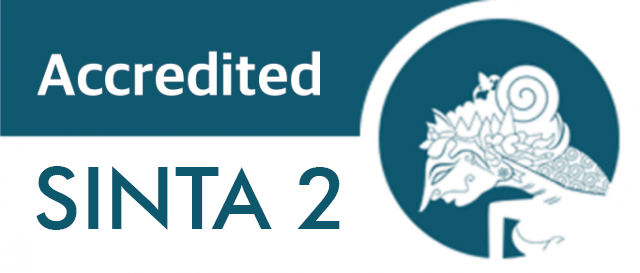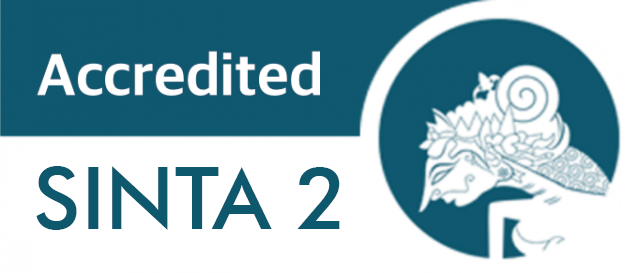Fragile Under Fire: Personality Disorders Underneath Resilience Facade of Medical Students
Introduction: Medical students with personality disorders (PDs) often have to present a resilient facade to navigate the intense pressures of their academic and clinical training. These disorders can negatively influence their emotional well-being, academic success, and professional development. This review explores the prevalence, impact, and diagnostic methodologies of PDs among medical students. Methods: A literature review was conducted to identify relevant studies from PubMed and Scopus following primary keywords “personality disorder” and “medical student,” investigating the possible effects and manifestation of personality disorders in medical students. Results: Medical students had a higher prevalence of PDs (30.2%) compared to the general population (6.1%). Obsessive-compulsive personality disorder (OCPD) is the most prevalent type (21.8%). The impact of PDs, exacerbated by the high stress of medical education, can lead to the increasing rate of depression, burnout, and anxiety, which further impact both academic success and career progression. Early intervention, including the use of standardized diagnostic tools such as the DSM-5-TR and ICD-11, can help to identify as well as enhance students’ overall well-being and performance. Conclusion: Medical students with PDs face significant challenges that impact their academic performance, emotional stability, and professional relationships. PDs require more extensive targeted mental health support and systemic changes in medical education. While there is no cure for PDs, therapy focusing on symptom management and emotional regulation can improve resilience and success. Addressing stigma and strengthening mental health services, curriculum integration, and peer support networks are essential for better outcomes.
Introductions
Medical education is known for its rigorous demands, encompassing long study hours, intense clinical responsibilities, and an expectation for high academic and professional performance. This high-pressure environment can lead to significant psychological stress that medical students must manage, contributing to or exacerbating underlying mental health issues and increasing vulnerability to personality disorders (PDs)[1]. The main characteristics of PDs are persistent, inflexible patterns of one’s behavior and internal experiences, departing from usual or accepted cultural expectations, impairing social, occupational, and other important life functions[2]. PDs in Medical students have a notably higher prevalence than in the general population, with studies showing rates as high as 30.2%[3], far exceeding the global adult average of 6.1%[4]. The most commonly observed PDs among medical students include obsessive-compulsive personality disorder (OCPD) at 21.8%, avoidant personality disorder (AvPD) at 6.7%, and paranoid personality disorder (PPD) at 2.8%[5]. These findings highlight that the stress and demands of medical training are significant contributing factors to the high incidence of PDs in this population.
Emotional instability and maladaptive coping mechanisms associated with PDs can lead to burnout, academic difficulties, and even career termination in severe cases. PDs also often impair interpersonal functioning, which has a direct impact on the fundamental ability to establish trust and communicate effectively with patients[6]. Communication is vital in healthcare as it enhances relationships with patients and teamwork among colleagues, which in turn ultimately fosters self-awareness and empathy. To address this issue, it is essential that medical education institutions enhance access to mental health resources, establish peer support networks, and integrate mental health training into medical curricula to reduce stigma, encourage early intervention, and thus assist medical students gaining a better understanding of how to regulate their own behaviors and emotional responses[7]. Additionally, ensuring that curricula support a healthy work-life balance and promote adaptive coping strategies can equip students with the resilience needed for better well-being and academic success[8].
The purpose of this literature review is to provide a comprehensive analysis of personality disorders in medical students, identifying research gaps and highlighting the implications of PDs for their academic and professional lives. This article also aims to give information about the importance of recognizing and addressing PDs as a tribute to enhance both student well-being and professional resilience. Addressing these factors will improve the academic outcomes and career trajectories of medical students and contribute to their development into competent, empathetic healthcare professionals.
Methods
A literature review was conducted to identify relevant studies from PubMed and Scopus following primary keywords "personality disorder" and "medical student," investigating the possible effects and manifestation of personality disorders in medical students.
Reviews
Definition of Personality Disorders (PDs)
The term "personality" describes the persistent traits and behaviors that make up an individual's own way of adjusting to life[9]. Adaptability refers to the process of drawing insights from previous experiences and suggesting varied responses to diverse situations[10]. This behavior is absent in individuals with personality disorders (PDs), who typically exhibit consistent and rigid responses to various circumstances[11]. This results in an inability to sustain a healthy and appropriate coping mechanism, ultimately leading to feelings of helplessness and frustration in the patient[12].
According to the Diagnostic and Statistical Manual of Mental Disorders, Fifth Edition, Text Revision (DSM-5-TR), a personality disorder is characterized by a personality pattern and associated interior experiences that greatly hinder an individual's capacity to function in social interactions, or the persistent, inflexible patterns of one’s behavior.
Internal experiences, departing from usual or accepted cultural expectations, impairing social, occupational, and other important life functions. The PDs are categorized into three separate categories in the guideline: Cluster A, which includes Paranoid, Schizoid, and Schizotypal Personality Disorders; Cluster B, which includes Borderline, Narcissistic, Histrionic, and Antisocial Personality Disorders; and Cluster C, which includes Avoidant, Dependent, and Obsessive-Compulsive Personality Disorders[13].
DSM-5 | ||
|---|---|---|
Clusters | Code | Label |
Cluster A Personality Disorder | 301.0 | Paranoid Personality Disorder |
301.20 | Schizoid Personality Disorder | |
301.22 | Schizotypal Personality Disorder | |
Cluster B Personality Disorder | 301.7 | Antisocial Personality Disorder |
301.83 | Borderline Personality Disorder | |
301.50 | Histrionic Personality Disorder | |
301.81 | Narcissistic Personality Disorder | |
Cluster C Personality Disorder | 301.82 | Avoidant Personality Disorder |
301.6 | Dependent Personality Disorder | |
301.4 | Obsessive-Compulsive Personality Disorder | |
Other Personality Disorders | 301.1 | Personality Change Due Another Medical Condition |
301.89 | Other Specified Personality Disorder | |
301.9 | Unspecified Personality Disorder |
The ICD-11 classification groups the PDs diagnosis into “mild,” “moderate,” or “severe,” with the proposed domains that consist of Negative Affectivity, Detachment, Disinhibition, Dissociality, and Anankastia[14]. The higher-order trait categories in the Alternative DSM-5 Model for Personality Disorders (DSM-5-AMPD) reasonably correspond to these domains[15]. The borderline pattern is a category that has high similarity with borderline personality disorder (BPD); it does not reflect a single trait, but rather a composite of five traits expressed at varied degrees of intensity[16].
ICD-11 | ||
|---|---|---|
Diagnostic Hierarchy | Code | Label |
Unspecified primary diagnosis | 6D10.Z | Personality Disorder, Severity Unspecified |
Severity classification codes | None | No Personality Disturbances |
QE50.7 | Personality Difficulty | |
6D10.0 | Mild Personality Disorder | |
6D10.1 | Moderate Personality Disorder | |
6D10.2 | Severe Personality Disorder | |
Trait domain specifier codes | 6D11.0 | Negative Affectivity |
6D11.1 | Detachment | |
6D11.2 | Disinhibition | |
6D11.3 | Dissociality | |
6D11.4 | Anankastia | |
Additional specifier | 6D11.5 | Borderline Pattern |
Etiology of PDs
PDs mostly emerge in adolescence and early adulthood[17]
I. McManus, A. Keeling, and E. Paice, “Stress, burnout and doctors’ attitudes to work are determined by personality and learning style: A twelve year longitudinal study of UK medical graduates,” BMC Med, vol. 2, no. 1, p. 29, Aug. 2004, doi: 10.1186/1741-7015-2-29.
L. Ekselius, “Personality disorder: a disease in disguise,” Ups J Med Sci, vol. 123, no. 4, pp. 194–204, Oct. 2018, doi: 10.1080/03009734.2018.1526235.
M. Al-Jaffer et al., “WITHDRAWN: Prevalence of personality traits and disorders among KSU medical students. Obsessive-compulsive personality disorder: a survival mechanism or a prerequisite?,” Apr. 22, 2022. doi: 10.21203/rs.3.rs-1541250/v1.
P. Tyrer, G. M. Reed, and M. J. Crawford, “Classification, assessment, prevalence, and effect of personality disorder,” The Lancet, vol. 385, no. 9969, pp. 717–726, Feb. 2015, doi: 10.1016/S0140-6736(14)61995-4.
G. Ma, H. Fan, C. Shen, and W. Wang, “Genetic and Neuroimaging Features of Personality Disorders: State of the Art,” Neurosci Bull, vol. 32, no. 3, pp. 286–306, Jun. 2016, doi: 10.1007/s12264-016-0027-8.
A. Vittori et al., “Maladaptive personality traits are associated with burnout risk in Italian anesthesiologists and intensivists: a secondary analysis from a cross-sectional study.,” Journal of anesthesia, analgesia and critical care, vol. 4, no. 1, p. 36, Jun. 2024, doi: 10.1186/s44158-024-00171-5.
A. McAllister et al., “Embedding interpersonal stigma resistance into the medical curriculum: a focus group study of medical students.,” BMC Med Educ, vol. 23, no. 1, p. 686, Sep. 2023, doi: 10.1186/s12909-023-04512-w.
S. M. Chye, Y. Y. Kok, Y. S. Chen, and H. M. Er, “Building resilience among undergraduate health professions students: identifying influencing factors.,” BMC Med Educ, vol. 24, no. 1, p. 1168, Oct. 2024, doi: 10.1186/s12909-024-06127-1.
American Psychological Association and G. R. Vandenbos, APA Dictionary of Psychology, Second Edition. American Psychological Association, 2015.
Í. M. Oliveira and C. Marques, “The Role of Career Adaptability and Academic Engagement in College Student’s Life Satisfaction.,” Int J Environ Res Public Health, vol. 21, no. 5, May 2024, doi: 10.3390/ijerph21050596.
M. Malek, M. Moinalghorabaei, M. Lesanpezeshki, and A. Mohammadi, “The Relationship Between Personality Features and Academic Performance in Medical Students,” Iran J Psychiatry Behav Sci, vol. 13, no. 4, Dec. 2019, doi: 10.5812/ijpbs.96373.
F. Leichsenring et al., “Borderline personality disorder: a comprehensive review of diagnosis and clinical presentation, etiology, treatment, and current controversies.,” World Psychiatry, vol. 23, no. 1, pp. 4–25, Feb. 2024, doi: 10.1002/wps.21156.
American Psychiatric Association, Diagnostic and Statistical Manual of Mental Disorders. American Psychiatric Association Publishing, 2022. doi: 10.1176/appi.books.9780890425787.
World Health Organization, ICD-11: International classification of diseases, 11th Revision. 2022.
B. Pan and W. Wang, “Practical implications of ICD-11 personality disorder classifications,” BMC Psychiatry, vol. 24, no. 1, p. 191, Mar. 2024, doi: 10.1186/s12888-024-05640-3.
M. B. First et al., “An organization‐ and category‐level comparison of diagnostic requirements for mental disorders in ICD ‐11 and DSM ‐5,” World Psychiatry, vol. 20, no. 1, pp. 34–51, Feb. 2021, doi: 10.1002/wps.20825.
L. Ekselius, “Personality disorder: a disease in disguise.,” Ups J Med Sci, vol. 123, no. 4, pp. 194–204, Dec. 2018, doi: 10.1080/03009734.2018.1526235.
K. A. Fariba, V. Gupta, T. J. Torrico, and E. Kass, Personality Disorder. 2024.
S. Sanchez‐Roige, J. C. Gray, J. MacKillop, C. ‐H. Chen, and A. A. Palmer, “The genetics of human personality,” Genes Brain Behav, vol. 17, no. 3, Mar. 2018, doi: 10.1111/gbb.12439.
S. Sanchez-Roige, J. C. Gray, J. MacKillop, C.-H. Chen, and A. A. Palmer, “The genetics of human personality.,” Genes Brain Behav, vol. 17, no. 3, p. e12439, Mar. 2018, doi: 10.1111/gbb.12439.
G. Ma, H. Fan, C. Shen, and W. Wang, “Genetic and Neuroimaging Features of Personality Disorders: State of the Art.,” Neurosci Bull, vol. 32, no. 3, pp. 286–306, Jun. 2016, doi: 10.1007/s12264-016-0027-8.
T. Reichborn-Kjennerud, “The genetic epidemiology of personality disorders,” Dialogues Clin Neurosci, vol. 12, no. 1, pp. 103–114, Mar. 2010, doi: 10.31887/DCNS.2010.12.1/trkjennerud.
D. Ansari et al., “Genetic Influences on Outcomes of Psychotherapy in Borderline Personality Disorder: A Narrative Review of Implications for Personalized Treatment,” Cureus, Aug. 2023, doi: 10.7759/cureus.43702.
D. M. Gescher, K. G. Kahl, T. Hillemacher, H. Frieling, J. Kuhn, and T. Frodl, “Epigenetics in Personality Disorders: Today’s Insights,” Front Psychiatry, vol. 9, Nov. 2018, doi: 10.3389/fpsyt.2018.00579.
I. Leppla, D. Fishman, I. Kalra, and M. A. Oldham, “Clinical Approach to Personality Change Due to Another Medical Condition,” J Acad Consult Liaison Psychiatry, vol. 62, no. 1, pp. 14–21, Jan. 2021, doi: 10.1016/j.psym.2020.08.003.
R. Laugharne and A. Flynn, “Personality disorders in consultation–liaison psychiatry,” Curr Opin Psychiatry, vol. 26, no. 1, pp. 84–89, Jan. 2013, doi: 10.1097/YCO.0b013e328359977f.
T. A. Widiger, Ed., The Oxford Handbook of Personality Disorders. Oxford University Press, 2012. doi: 10.1093/oxfordhb/9780199735013.001.0001.
J. Volkert, T.-C. Gablonski, and S. Rabung, “Prevalence of personality disorders in the general adult population in Western countries: systematic review and meta-analysis,” The British Journal of Psychiatry, vol. 213, no. 6, pp. 709–715, Dec. 2018, doi: 10.1192/bjp.2018.202.
J. R. Oltmanns, G. T. Smith, T. F. Oltmanns, and T. A. Widiger, “General Factors of Psychopathology, Personality, and Personality Disorder: Across Domain Comparisons,” Clinical Psychological Science, vol. 6, no. 4, pp. 581–589, Jul. 2018, doi: 10.1177/2167702617750150.
L. C. Morey, M. N. McCredie, D. S. Bender, and A. E. Skodol, “Criterion A: Level of personality functioning in the alternative DSM–5 model for personality disorders.,” Personality Disorders: Theory, Research, and Treatment, vol. 13, no. 4, pp. 305–315, Jul. 2022, doi: 10.1037/per0000551.
B. Pan and W. Wang, “Practical implications of ICD-11 personality disorder classifications.,” BMC Psychiatry, vol. 24, no. 1, p. 191, Mar. 2024, doi: 10.1186/s12888-024-05640-3.
D. Gamache et al., “A Proposed Classification of ICD-11 Severity Degrees of Personality Pathology Using the Self and Interpersonal Functioning Scale.,” Front Psychiatry, vol. 12, p. 628057, 2021, doi: 10.3389/fpsyt.2021.628057.
M. Zimmerman and C. Balling, “Screening for Borderline Personality Disorder With the McLean Screening Instrument: A Review and Critique of the Literature,” J Pers Disord, vol. 35, no. 2, pp. 288–298, Apr. 2021, doi: 10.1521/pedi_2019_33_451.
P. Klein, A. K. Fairweather, and S. Lawn, “Structural stigma and its impact on healthcare for borderline personality disorder: a scoping review.,” Int J Ment Health Syst, vol. 16, no. 1, p. 48, Sep. 2022, doi: 10.1186/s13033-022-00558-3.
A. Medisauskaite, M. E. W. M. Silkens, and A. Rich, “A national longitudinal cohort study of factors contributing to UK medical students’ mental ill-health symptoms.,” Gen Psychiatr, vol. 36, no. 2, p. e101004, 2023, doi: 10.1136/gpsych-2022-101004.
D. Bhugra and A. Molodynski, “Well-being and burnout in medical students: challenges and solutions,” Ir J Psychol Med, vol. 41, no. 2, pp. 175–178, Jun. 2024, doi: 10.1017/ipm.2022.26.
K. E. Hein, S. J. Dennis, L. F. Folger, and S. N. Mullins-Sweatt, “Perception of stigma across diagnostic models of personality pathology.,” Personality Disorders: Theory, Research, and Treatment, vol. 15, no. 5, pp. 332–340, Sep. 2024, doi: 10.1037/per0000678.
J. Chronister, S. Fitzgerald, and C.-C. Chou, “The meaning of social support for persons with serious mental illness: A family member perspective.,” Rehabil Psychol, vol. 66, no. 1, pp. 87–101, Feb. 2021, doi: 10.1037/rep0000369.
J. Pointon-Haas, L. Waqar, R. Upsher, J. Foster, N. Byrom, and J. Oates, “A systematic review of peer support interventions for student mental health and well-being in higher education.,” BJPsych Open, vol. 10, no. 1, p. e12, Dec. 2023, doi: 10.1192/bjo.2023.603.
K. R. Barr, M. Jewell, M. L. Townsend, and B. F. S. Grenyer, “Living with personality disorder and seeking mental health treatment: patients and family members reflect on their experiences,” Borderline Personal Disord Emot Dysregul, vol. 7, no. 1, p. 21, Dec. 2020, doi: 10.1186/s40479-020-00136-4.
I. Weinberg and E. Ronningstam, “Dos and Don’ts in Treatments of Patients With Narcissistic Personality Disorder,” J Pers Disord, vol. 34, no. Supplement, pp. 122–142, Mar. 2020, doi: 10.1521/pedi.2020.34.supp.122.
S. Gautam, A. Jain, J. Chaudhary, M. Gautam, M. Gaur, and S. Grover, “Concept of mental health and mental well-being, it’s determinants and coping strategies.,” Indian J Psychiatry, vol. 66, no. Suppl 2, pp. S231–S244, Jan. 2024, doi: 10.4103/indianjpsychiatry.indianjpsychiatry_707_23.
A. Lönn, M. Weurlander, A. Seeberger, H. Hult, R. Thornberg, and A. Wernerson, “The impact of emotionally challenging situations on medical students’ professional identity formation,” Advances in Health Sciences Education, vol. 28, no. 5, pp. 1557–1578, Dec. 2023, doi: 10.1007/s10459-023-10229-8.
W. Li, Z. Zhao, D. Chen, Y. Peng, and Z. Lu, “Prevalence and associated factors of depression and anxiety symptoms among college students: a systematic review and meta‐analysis,” Journal of Child Psychology and Psychiatry, vol. 63, no. 11, pp. 1222–1230, Nov. 2022, doi: 10.1111/jcpp.13606.
D. Bhugra, A. Molodynski, and A. Ventriglio, “Well-being and burnout in medical students,” Ind Psychiatry J, vol. 30, no. 2, pp. 193–197, Jul. 2021, doi: 10.4103/ipj.ipj_224_21.
A. A. Hawsawi, N. Nixon, E. Stewart, and E. Nixon, “Exploring access to support services for medical students: recommendations for enhancing wellbeing support,” BMC Med Educ, vol. 24, no. 1, p. 671, Jun. 2024, doi: 10.1186/s12909-024-05492-1.
J. Leung, C. R. Cloninger, B. A. Hong, K. M. Cloninger, and D. S. Eley, “Temperament and character profiles of medical students associated with tolerance of ambiguity and perfectionism,” PeerJ, vol. 7, p. e7109, Jun. 2019, doi: 10.7717/peerj.7109.
A. Vittori et al., “Maladaptive personality traits are associated with burnout risk in Italian anesthesiologists and intensivists: a secondary analysis from a cross-sectional study,” Journal of Anesthesia, Analgesia and Critical Care, vol. 4, no. 1, p. 36, Jun. 2024, doi: 10.1186/s44158-024-00171-5.
Y. Zhang, Y. Gan, and H. Cham, “Perfectionism, academic burnout and engagement among Chinese college students: A structural equation modeling analysis,” Pers Individ Dif, vol. 43, no. 6, pp. 1529–1540, Oct. 2007, doi: 10.1016/j.paid.2007.04.010.
R. S. Biskin and J. Paris, “Diagnosing borderline personality disorder,” Can Med Assoc J, vol. 184, no. 16, pp. 1789–1794, Nov. 2012, doi: 10.1503/cmaj.090618.
L. Jain and T. J. Torrico, Paranoid Personality Disorder. 2024.
T. J. Torrico and N. Madhanagopal, Schizoid Personality Disorder. 2024.
Z. Francois and T. J. Torrico, Schizotypal Personality Disorder. 2024.
S. C. Napolitano, S. P. Lane, J. Hepp, A. McDonald, C. Trumbower, and T. J. Trull, “The roles of personality traits and close social contact in the expression of momentary borderline personality disorder symptoms in daily life.,” Personality Disorders: Theory, Research, and Treatment, vol. 13, no. 5, pp. 494–504, Sep. 2022, doi: 10.1037/per0000513.
F. Leichsenring et al., “Borderline personality disorder: a comprehensive review of diagnosis and clinical presentation, etiology, treatment, and current controversies,” World Psychiatry, vol. 23, no. 1, pp. 4–25, Feb. 2024, doi: 10.1002/wps.21156.
P. Mitra, T. J. Torrico, and D. Fluyau, Narcissistic Personality Disorder. 2024.
A. V. Weme, K. D. Sørensen, and P.-E. Binder, “Agency in avoidant personality disorder: a narrative review.,” Front Psychol, vol. 14, p. 1248617, 2023, doi: 10.3389/fpsyg.2023.1248617.
A. Rizvi and T. J. Torrico, Obsessive-Compulsive Personality Disorder. 2024.
Copyright (c) 2025 Nazhifah Mahdiyah, Damba Bestari, Aashi Dubey

This work is licensed under a Creative Commons Attribution-ShareAlike 4.0 International License.
1. Copyright of this journal is possession of the Author, by the knowledge of the Editorial Board and Journal Manager, while the moral right of the publication belongs to the author.
2. The journal allows the author(s) to retain publishing rights without restrictions.
3. The articles are published under a Creative Commons Attribution Share-Alike (CC BY-SA) license. Many research funding bodies prefer the CC BY-SA license because it allows for maximum dissemination and re-use of open access materials. Users are free to share (copy, distribute, and transmit) and remix (adapt) the contribution under this license, including for commercial purposes, as long as they attribute the contribution in the manner specified by the author or licensor.




























